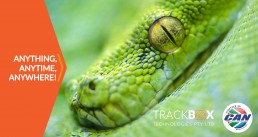Our scaly friends – Snakes : Wildlife
Many of us as humans have the common ideology of snake = danger. This article has been based on the interest of changing people’s perspectives about snakes, to help educate them as to the role of the snake and why they are a vital to have around, and finally to advise on what snakes to be cautious of and which ones are not to be concerned about.
As summer is upon us, we can expect a visit every now and again from one or two of our scaly friends. Most encounters that people have with snakes are with those of a non-venomous nature, such as the Spotted Bush Snake, Brown House Snake, Red Lipped Heralds, Green Water Snakes, Southern Brown Egg Eaters, Black Headed Centipede Eaters, Brown Water Snakes and Mole Snakes, just to name a few.
The venomous species to be on the lookout for and to well stay clear of that people come into contact with most commonly in the suburban areas are the Puff Adder, the Black Mamba, the Cape Cobra, the Boomslang, the Mozambique Spitting Cobra and the Rinkhals, to name the most common.
Now many people may be questioning why the Green Mamba is not on the list of most common venomous snakes and the answer is that Green Mambas are not actually as common as believed to be. They prefer forested areas with minimal human interference such as mangrove areas and dense tree influenced areas.
What is the role of snakes in the environment and why they are a vital entity to have around:
Snakes form a key link in the food chain and they act as both predator and prey. They help maintain a healthy ecosystem, taking care of the rodent, frog, lizard, bird and centipede population, a control that nature has provided us. Without snakes there would be an outbreak in these species and there would be very few other creatures that could assist with population control, potentially leading to outbreaks and population explosions that would affect environment and result in food chain imbalances.
Snake Venom:
Snake venom is produced and stored in modified salivary glands, roughly on either side of the head, behind the eyes. The venom not only allows the snake to kill its prey, but also assist with the digestive processes. Snakes cannot chew their food and thus rely on their saliva and venom. Snakes each have only one of the venom types, except for the Mozambique Spitting Cobra, and the Berg Adder, which have both venom that is Cytotoxic as well as Neurotoxic. Venom of the Gaboon Adder has Cytotoxic, Haemotoxic (causes bleeding) and cardio-vascular effects.
Classification of snake venom:
Haemotoxic venom – Boomslang and Vine Snake. This venom causes continued bleeding because it stops blood from coagulating. These snakes have grooved back fangs.
Cytotoxic venom – Adders. This type of venom leads to tissue destruction around the site of the bite along with localised bleeding. These snakes have Hollow front hinged fangs.
Neurotoxic venom – Cobras and Mambas. This venom affects the nervous system and causes paralysis of the muscles, difficulty in breathing, nausea and vomiting. These snakes have hollow front fixed fangs.
Interesting facts about snakes:
- Snakes have good vision and will tend to ignore and not strike at stationary objects, hence the reason behind the rule: if you do come into the proximity of a snake, do not move and wait for it to move off before continuing. The two exceptions to this are the Boomslang and the Vine Snake, these two species are capable of seeing and recognising stationary prey.
- Snakes are unable to hear airborne sounds due to the absence of external ear holes. They do however have an auditory nerve and are able to pick up sounds traveling through a dense medium such as the ground.
- Snakes can smell by pushing their tongue through a groove in the front of the mouth, and as it flicks up and down it picks up various particles in the air. When the tongue is retracted back into the mouth, these particles are deposited into a special organ called the Jacobson’s organ, situated in the roof of the mouth. This informs the brain exactly what the snake is smelling.
- Snakes make use of three different systems of movement. Sidewinding is the first motion, it is a specialised form of movement used only by a few desert-dwelling species to allow for movement across moving sand. Next is a normal serpentine movement, used by most snakes as a form of movement when disturbed or when chasing prey. The snake undulates horizontally forcing the lower, rear edges of the body against any projections on the ground. Finally we have the Caterpillar-like movement, the snake progresses slowly forward in a straight line using the scales on the underside of the body pushing forwards in waves, heavy bodied snakes such as pythons and Puff Adders often use this method of forward motion.
Hopefully this little segment has helped you understand snakes a little bit better and that you, the reader has learned a bit more about snakes, their roles in the environment and what species are both lethal and non-lethal and finally why they are an important entity to have around . Snakes are not here to target us and would much rather choose the flight option rather than fight as they have to stay in good condition to hunt their prey and keep our homes and neighbourhood rodent, frog, bird and lizard populations in check so that we do not encounter any outbreaks in populations.
Michael Nel (SA37)
Credit: Article has been composed from personal experiences, Studying from Nature Guide Learner Manual (NQF2) written by Grant and Gillie Hine and with studying through ASI ( African snakebite institute) with Johan Marais.



